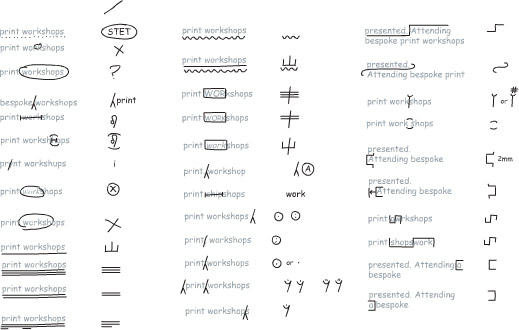Resources
- Folding Formats
- Glossary
- Paper Sizes
- Printer Marks
Folding Formats

4 PAGE SINGLE FOLD

6 PAGE SINGLE FOLD

4 PAGE GATE FOLD

8 PAGE PARALLEL MAP FOLD

6 PAGE CONCERTINA FOLD

6 PAGE STANDARD FOLD

8 PAGE CONCERTINA FOLD

8 PAGE PARALLEL DOUBLE FOLD

SRA2 DOUBLE FOLDED TO A4
Glossary
Author’s alterations: customer’s corrections/changes made at the proofing stage. These are charged to the customer.
Binding: process of fastening papers together.
Bitmap: a grid of pixels or printed dots generated by computer to represent type and images.
Bleed: the printed image extends beyond the trim edge of a sheet or page. A bleed may occur at the head, front, foot and/or gutter of a page.
Carbonless paper:paper coated with chemicals that enable transfer of images from one sheet to another with pressure from writing or typing.
CMYK: abbreviation for cyan, magenta, yellow and key (black), the 4 process colours, which combined together in varying proportions can be made to produce the full colour spectrum.
Collating: arranging of printed sheets into the desired sequence.
Colour separation: process by which a continuous tone colour image is separated into the four process colours for print production.
Cover paper: a heavyweight paper made particularly to protect inner, thinner sheets of such printed items as booklets.
Crop marks: marks at the edges of an illustration or photograph to indicate the portion to be reproduced.
DPI:dots per inch; measure for output resolution of various devices.
Dummy:a mock-up made to resemble the final printed product which uses the proposed grade, weight, finish and colour of paper.
Estimate:a price given to a customer based on specifications provided by the customer. The price can change if the order specifications are not the same as the estimate specifications.
Flush:even with (as with to a margin).
Four-colour process:reproduction of full-colour photographs or art with the four basic colours of ink (yellow, magenta, cyan, black).
Gutter:line or fold at which facing pages meet.
Halftone:picture with shades of tone created by varying size dots.
Imagesetter:a device that plots high-resolution bitmaps which have been processed by a RIP. May include type, graphics and photographic images. It outputs a to film or paper.
Justified:text which is flush to both the left and right margins.
Line copy:copy which can be reproduced without using halftones.
Make-ready:the work associated with the set-up of printing equipment before running a job.
Over-run:copies printed in excess of the quantity specified in the order.
Perfect binding:a bookbinding method in which pages are glued rather than sewn to the cover. Used primarily for paperback books.
Point:a measurement for the size of type, distance between lines and thickness of rules. One point equals one seventy-second of an inch (0.3515mm).
Ragged right:typesetting style in which lines end in unequal lengths on the right side (usually justified on left).
Registration marks:crosses or other marks placed on artwork which ensure perfect alignment (‘registration’).
Reversed-out:type appearing white on a black or colour background, either a solid or a tint.
Resolution:the number of dots per inch (dpi) in a computer-processed document. The level detail retained by a printed document increases with higher resolution.
RIP (raster image processor):computer used to create an electronic bitmap for actual output. This may be built into an imagesetter or may be separate.
Saddle stitch:a binding process in which a pamphlet or booklet is stapled through the middle fold of its sheets using saddle wire.
Score:a pressed mark in a sheet of paper, usually a thick paper, to make folding cleaner and easier.
Self-cover:the paper used inside a booklet is the same as that used for the cover and is generally printed on the same press run.
Signature:folded, printed paper forming a section of a book; usually in a multiple of four, and more often a multiple of eight.
Solid:an area on the page which is completely covered by the ink.
Stock:the paper or card which is to be printed on.
Tint:an area of tone made by a pattern of dots, which lightens the apparent colour of the ink with which it is printed.
Paper Sizes
| A sizes (mm) | B sizes (mm) | C sizes (mm) | |||
|---|---|---|---|---|---|
| A0 | 841 x 1189 | B0 | 1020 x 1440 | C0 | 917 x 1297 |
| A1 | 594 x 841 | B1 | 720 x 1020 | C1 | 648 x 917 |
| A2 | 420 x 594 | B2 | 520 x 720 | C2 | 458 x 648 |
| A3 | 297 x 420 | B3 | 360 x 520 | C3 | 324 x 458 |
| A4 | 210 x 297 | B4 | 250 x 353 | C4 | 229 x 324 |
| A5 | 148 x 210 | B5 | 176 x 250 | C5 | 162 x 229 |
| A6 | 105 x 148 | B6 | 125 x 176 | C6 | 114 x 162 |
| A7 | 74 x 105 | B7 | 88 x 125 | C7 | 81 x 114 |
| A8 | 52 x 74 | B8 | 62 x 88 | C8 | 57 x 81 |
| A9 | 37 x 52 | B9 | 44 x 62 | C9 | 40 x 57 |
| A10 | 26 x 37 | B10 | 31 x 44 | C10 | 28 x 40 |
Printer Marks

